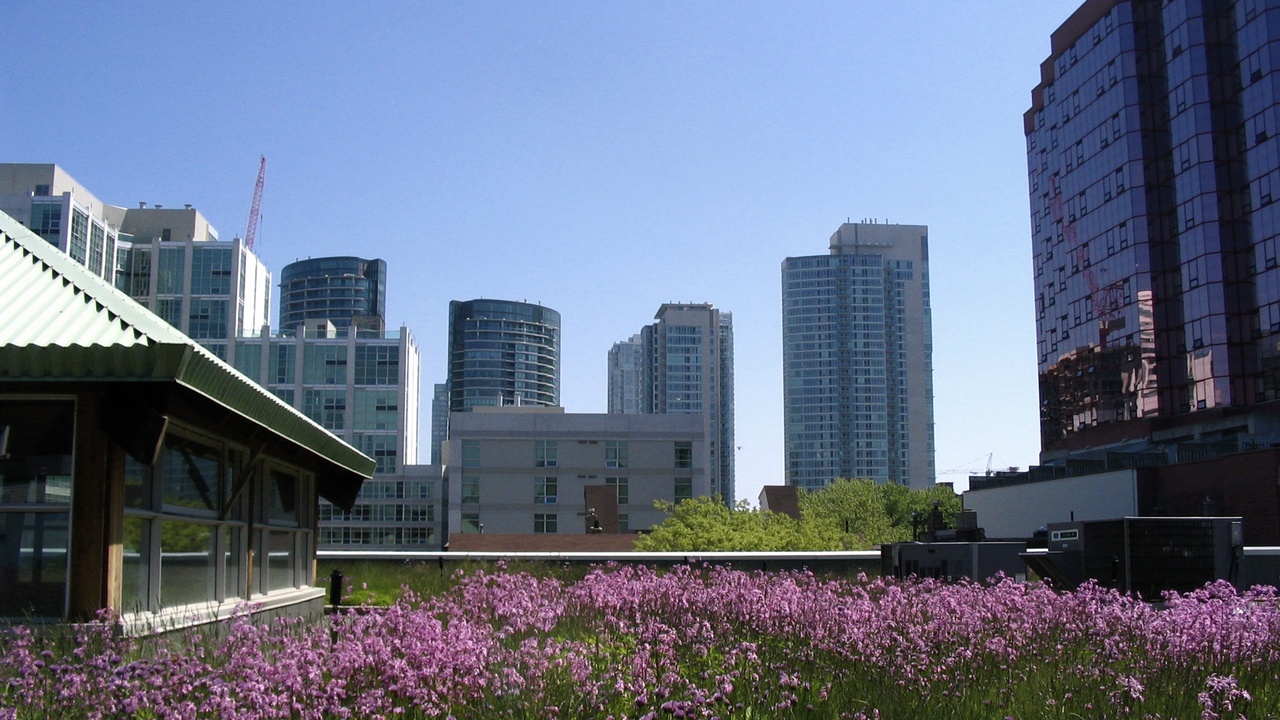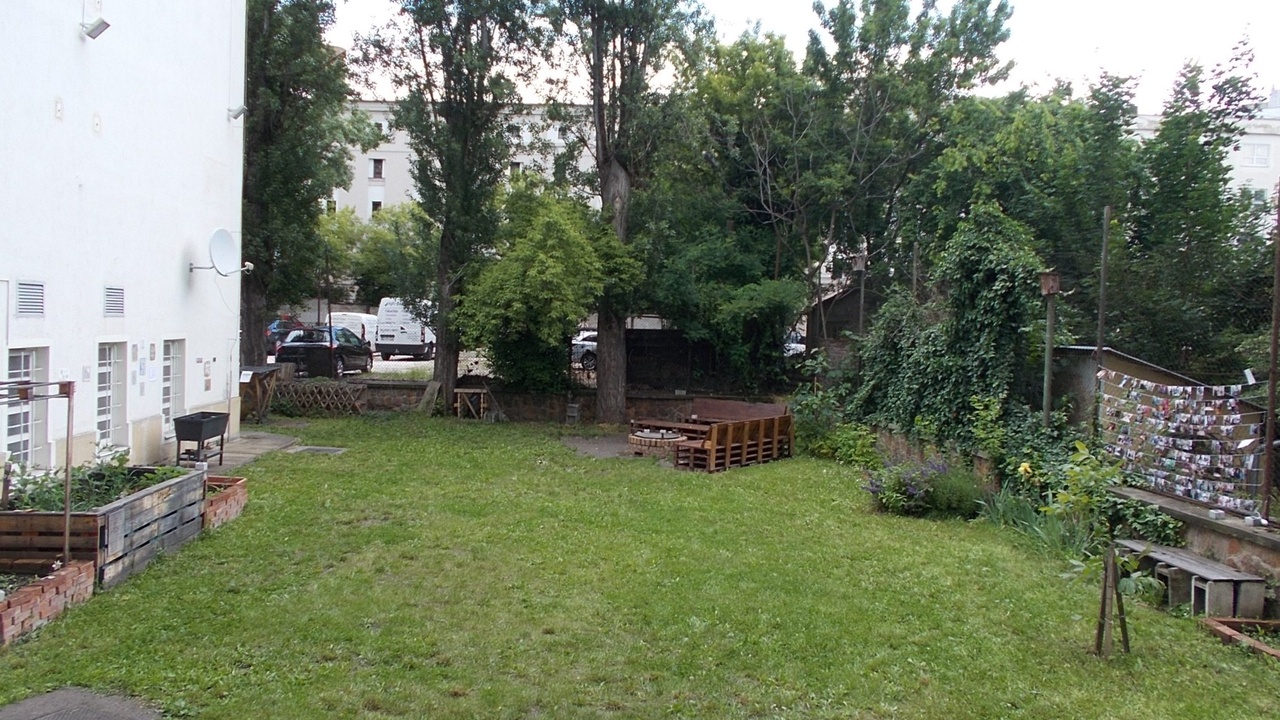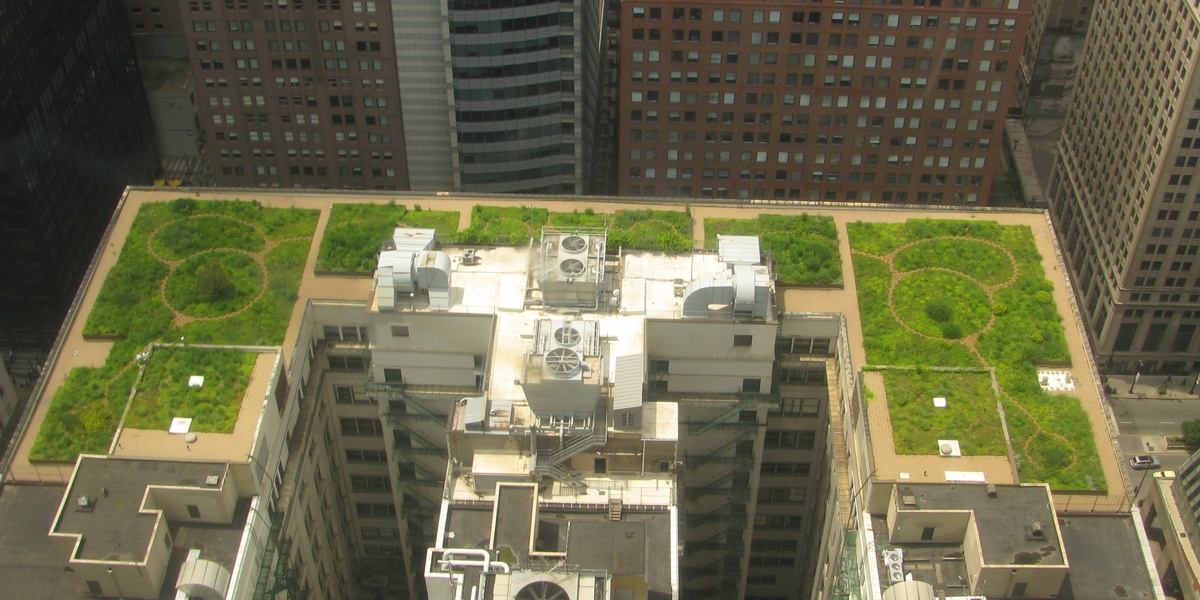In July 2001 Chicago City Hall opened a 20,000-square-foot planted roof that changed how cities think about rooftops.
Rising urban heat, overloaded storm sewers, and aging buildings are real, expensive problems — and green roofs offer more than curb appeal. The benefits of green roofs reach past aesthetics into measurable environmental, energy, economic and health gains that make them a sensible investment for city planners and property owners.
Below are ten specific advantages of rooftop vegetation, organized into four categories so you can see which outcomes matter most to your project.
Environmental benefits

Planted roofs interact directly with urban ecosystems: they capture rain, lower surface temperatures, and create small but valuable habitat patches. The next three points explain stormwater control, urban cooling, and biodiversity gains.
1. Stormwater retention and reduced runoff
Green roofs capture and slow rainfall, reducing the volume and speed of runoff that hits combined sewers and streams. Studies and agency guidance (for example, the EPA on green infrastructure) report typical annual retention of roughly 40–60%, with small storm events often seeing 70–90% retained on extensive systems.
This retention delays peak flows, lowers downstream flood risk, and reduces the need for expensive conveyance or treatment upgrades. Chicago’s planted roof was a demonstration of how municipal buildings can reduce runoff, and Toronto explicitly folded green roofs into stormwater planning after adopting its 2009 bylaw.
For utilities and public-works departments, every square meter of planted roof eases pressure on combined-sewer overflow events and can reduce long-term capital costs.
2. Urban heat island mitigation and surface cooling
Vegetation and substrate lower roof surface temperatures and help cool the air just above buildings. Field studies and urban climate research commonly report roof-surface reductions of about 1–3°C, with localized air-temperature benefits where green roofs are clustered.
That cooler surface reduces building cooling loads (see energy section) and, at neighborhood scale, can cut heat-stress risks during heat waves. Cities that pilot large roof-greening programs report measurable declines in rooftop and nearby street temperatures, improving comfort for residents and reducing heat-related illness.
3. Habitat creation and urban biodiversity
Even shallow, sedum-dominated roofs provide forage and nesting opportunities for pollinators, insects, and some birds, turning dead roofscape into ecological stepping stones. Comparative surveys show higher insect visitation and greater plant diversity on vegetated roofs than on bare or gravel roofs.
Rooftop beekeeping projects, sedum meadows tailored for pollinators, and biodiverse intensive roofs all contribute to urban ecological networks — small habitat patches that help pollination corridors and migratory stopovers in dense cities.
Energy and building-performance benefits

Green roofs change a building’s thermal balance: they reduce summertime loads, add insulating mass, and protect roof membranes from extremes. Benefits vary by climate, roof design (extensive vs. intensive), and building use.
4. Reduced energy demand and lower cooling costs
Planted roofs shade and evapotranspire, which can lower cooling energy demand during hot months. Building studies often report cooling-energy reductions in the roughly 10–20% range for buildings in warm climates, with larger reductions at peak demand times.
Lower peak electricity use benefits owners and utilities alike: fewer demand charges for the owner, and reduced strain on grid infrastructure during heat events. For example, a commercial retrofit that added an extensive green roof documented measurable AC savings and a drop in peak demand during summer afternoons.
5. Improved thermal insulation and year-round comfort
Substrate and vegetation add thermal mass and create an insulating layer that moderates indoor temperature swings year-round. That means top-floor units and penthouses stay cooler in summer and lose less heat in winter, improving occupant comfort.
Schools and multifamily retrofits have reported calmer indoor temperatures and fewer HVAC cycles after installing green roofs, which translates into both comfort and modest operational savings over time.
6. Extended roof lifespan and lower maintenance costs
Vegetation and growing media shield waterproofing layers from UV radiation, hail, and extreme thermal swings. Manufacturers and municipal case studies commonly report membrane lifespans of two to three times that of exposed membranes under similar conditions.
That extension means fewer full roof replacements, lower disposal costs, and improved lifecycle economics. Several city-owned buildings have kept planted roofs for decades with only routine maintenance on drainage and plantings.
Economic and community benefits

Beyond direct environmental returns, green roofs send market signals: they can improve asset appeal, create skilled local jobs, and interact with incentives that make projects viable. The next two items look at value and workforce effects.
7. Increased property value and better marketability
Rooftop gardens and planted terraces are marketable amenities that can speed leasing and command premiums. Empirical studies report sale or rent premiums commonly in the single-digit to low-double-digit range (roughly 5–15%), depending on market, location, and whether the roof doubles as usable amenity space.
Developers advertise rooftop green space for offices and luxury apartments because tenants value views, outdoor space, and cooling benefits — all of which can translate into faster leases and higher effective rents.
8. Job creation and support for local green industries
Green-roof projects create demand for designers, contractors, horticultural suppliers, and maintenance crews. Installation teams, irrigation specialists, and ongoing landscape maintenance support local employment chains rather than one-off material purchases.
Organizations such as Green Roofs for Healthy Cities document how municipal programs stimulate local contractors and training programs, helping grow a regional green-infrastructure industry.
Health, social and policy benefits

Green roofs intersect with public health, community use, and municipal policy. They filter air, reduce heat-related risks, and provide spaces for recreation or urban agriculture. The next two items explore health and social outcomes.
9. Improved air quality and public-health outcomes
Vegetation captures particulate matter and can modestly reduce pollutant concentrations near roadways and busy urban corridors. Researchers estimate measurable deposition of PM on vegetated surfaces, and the cooling effect reduces heat-stress–related hospital visits during extreme heat.
Hospitals and schools that add planted roofs report improved thermal comfort and, in some cases, lower absenteeism or quicker patient recovery due to cooler, quieter spaces and cleaner air near intake points.
10. Recreation, urban agriculture, and community value
Green roofs serve as parks, classroom gardens, or productive farms. Rooftop farms supply restaurants and community-supported agriculture boxes in many cities, shortening supply chains and offering year-round education opportunities for schools.
Beyond food, these spaces host events, foster neighborhood ties, and give residents outdoor access where ground-level green space is limited. Community rooftop gardens often report higher social cohesion and increased stewardship of public spaces.
Summary
- Green roofs reduce stormwater runoff, lower rooftop temperatures, and create habitat — a model demonstrated by Chicago City Hall’s 2001 project.
- They cut cooling demand, stabilize indoor temperatures, and can extend membrane life by two to three times, improving lifecycle economics.
- Planted roofs boost property appeal, support local installation and maintenance jobs, and are shaped by policy tools like Toronto’s 2009 green-roof bylaw and stormwater incentives.
- Want to try one? Start with a small pilot, check local incentives or stormwater credits, and consult a qualified green-roof professional or trade group such as Green Roofs for Healthy Cities.


